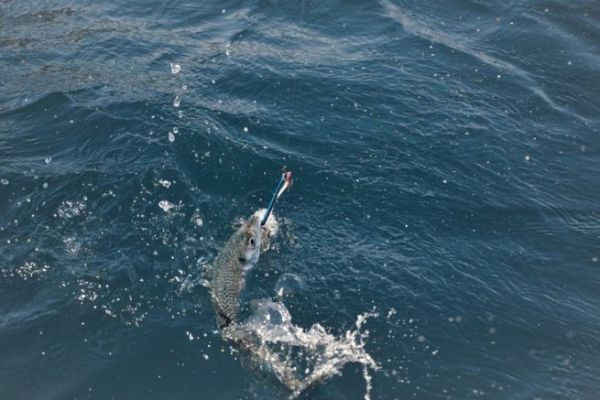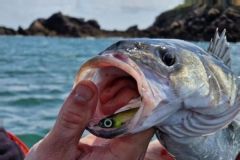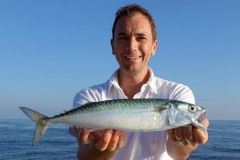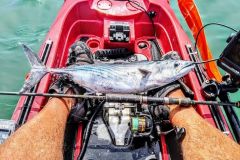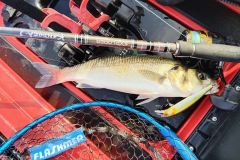An added attraction
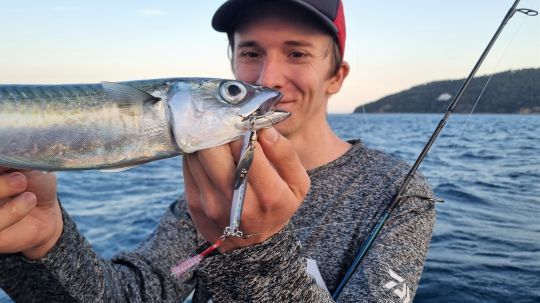
Paddle lures are very popular for freshwater fishing, but are rather rare in the sea. Yet the main purpose of a paddle lure is to imitate the reflections emitted by a fish as it moves. The majority of forage fish found at sea, such as anchovy, sardine or mullet, have scales that reflect light enormously, especially in the clear waters of the Mediterranean.
The vibrations emitted by a spinning paddle are also very interesting for predators to target their attack on our lure. Casting jigs lend themselves particularly well to the addition of a paddle as their substantial weight allows us to spin the paddle effortlessly.
Better passage through the hunt
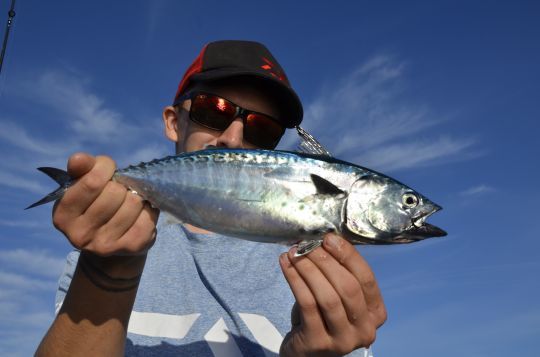
It's obvious that a paddle slows down the sink rate of our casting jig when it's rotating. This phenomenon can allow us to use heavier jigs than we are used to, without the risk of going under the cast and missing the fish. On small jigs, the paddle can also enable us to stay in the hunt for a very long time by casting very slowly to maximize our chances of hooking a fish on a cast.
However, bear in mind that the paddle will slow down the jig's penetration into the air, so it won't cast as far, around 5 to 10 metres. The use of a paddle is more suited to fishing in hunts where the fish are difficult and our single cast in a hunt must count. When the hunts are big, with lots of aggressive fish, the paddle won't make much difference, as the fish are already biting everything that moves.
Adapting weight and shape
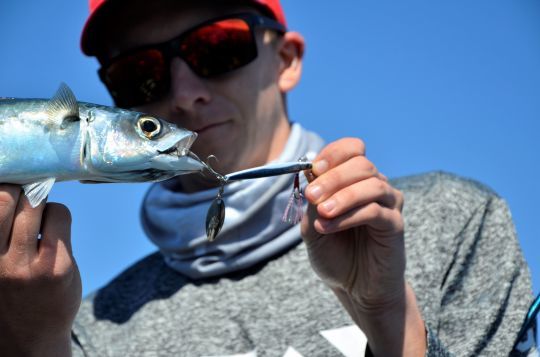
Whether you're using a casting jig or a paddle, adapting the weight and shape of the jig will make it even more effective. For example, a long, thin jig fitted with a willow blade will give you better casting distance than a stocky jig fitted with a colorado blade. On the other hand, the willow paddle will slow down the jig's descent into the water and force you to bring it back faster to stay in the right layer of water. The larger the paddle, the greater the drag. Similarly, the smaller the jig, the slower the descent.
The aim of this rig is to find the balance or balances that work best for different fishing conditions. Some fish also have preferences, such as redfish and mackerel, which prefer colorado pallets, and pelamids and tunas, which are more inclined to grab a willow pallet that can fish faster in the hunt.

 /
/ 